Parallel circuits
Parallel circuits This circuit and circuit diagram contain a cell and three lamps connected in parallel. Advantages of parallel circuits In the example above, the first lamp has failed but the other two lamps are still working. Similarly, if the second or third lamp were to fail, the other lamps would still light up. For this reason, parallel circuits are much more common than series circuits. Switches in parallel circuits In a parallel circuit, if the switch is open, all the lamps are off but when the switch is closed, all the lamps are lit. In this parallel circuit, we have a closed switch in the first branch (or loop), an open switch in the second branch and a closed switch in the third branch. In the first branch, the switch is open, so we have an incomplete circuit. Even though the switch is open, the second and third lamps will still be on.
In a parallel circuit, there is more than one way for electrons to flow. The components are in different loops (called branches).
Below is an example of a parallel circuit: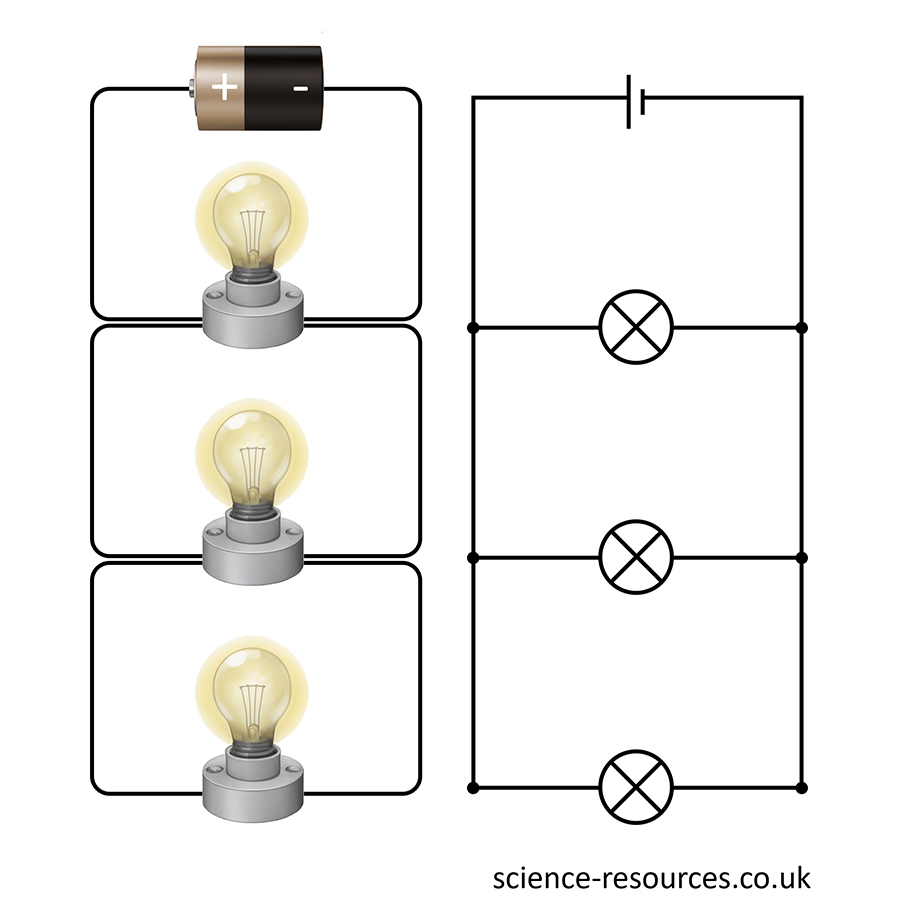
In a parallel circuit, when a component (such as a lamp) in a branch breaks, the components in other branches keep working. This is because current continues to flow along remaining paths in the circuit. Let’s see an example: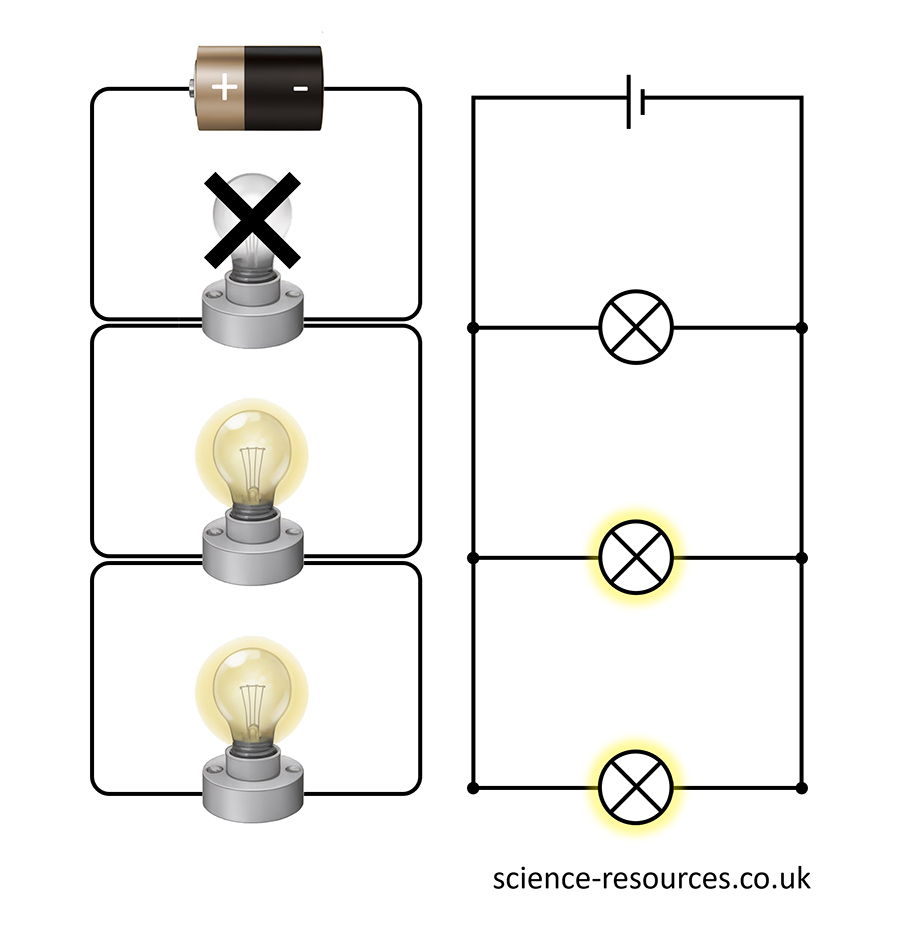
We can use switches to control which components we want to turn on and off inside a parallel circuit.
The position of switches in parallel circuit is important. If the switch is open, both lamps are off. When the switch is closed, both lamps are on.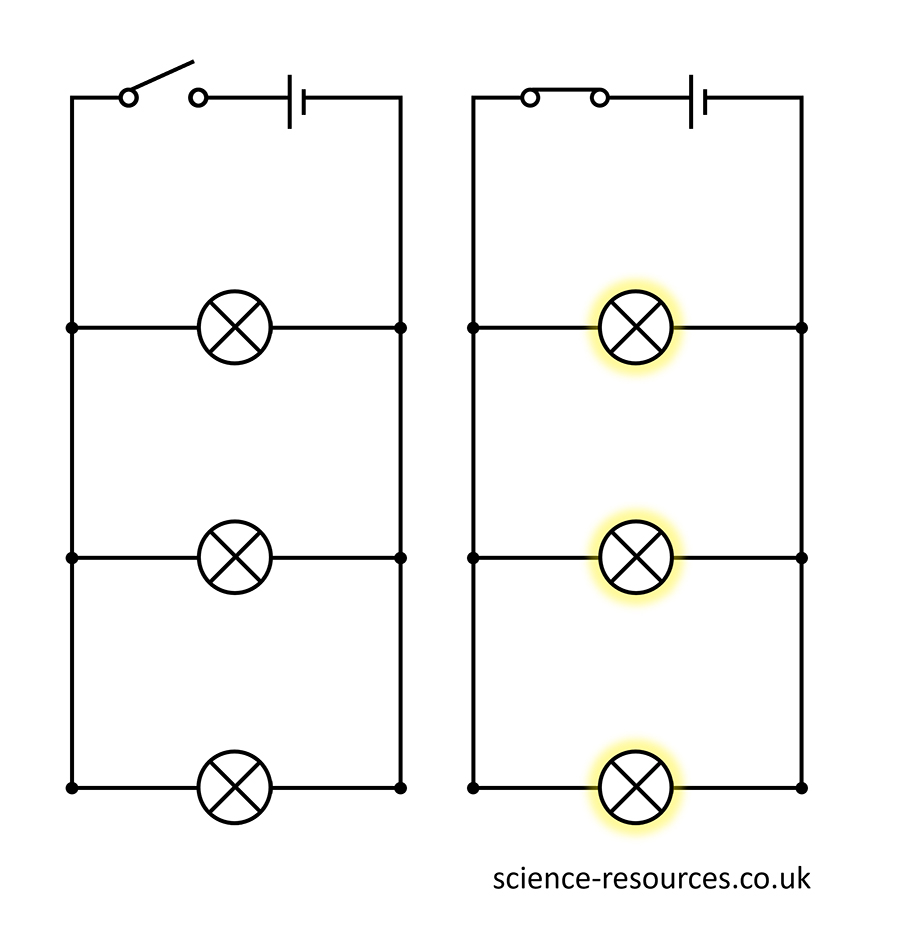
Let’s look at another example: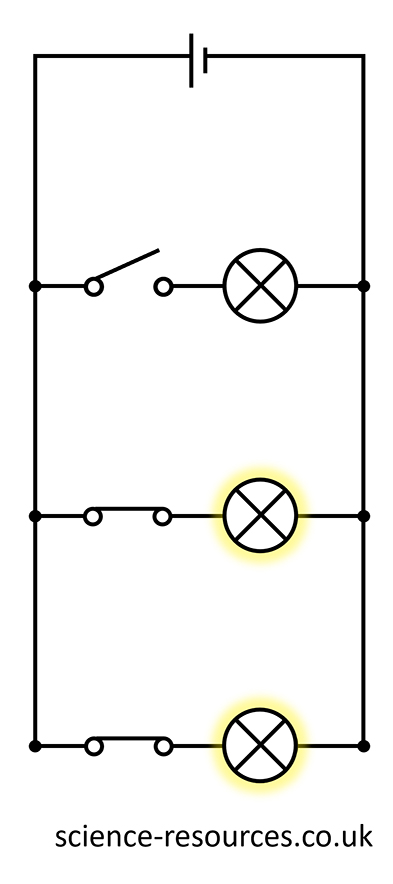
Current and resistance in parallel circuits In the example below, the total current is 6 amperes (6 amps), so all the branches must add up to 6 amperes. Each branch is 2 amperes and there are a total of three branches. These all add up to 6 amperes (2 + 2 + 2 = 6). Resistance in parallel circuits Lamps that are the same have the same resistance. Each lamp in parallel has the same current going through it. Each lamp shines with the same brightness. Potential difference in a parallel circuit If extra lamps are added to a parallel circuit, all the lamps will continue to glow brightly. This is because the potential difference is the same across all branches.
A parallel circuit can have different currents in different parts. This is because the current can choose different ways to go around the circuit.
The current is split between the different branches of the circuit:
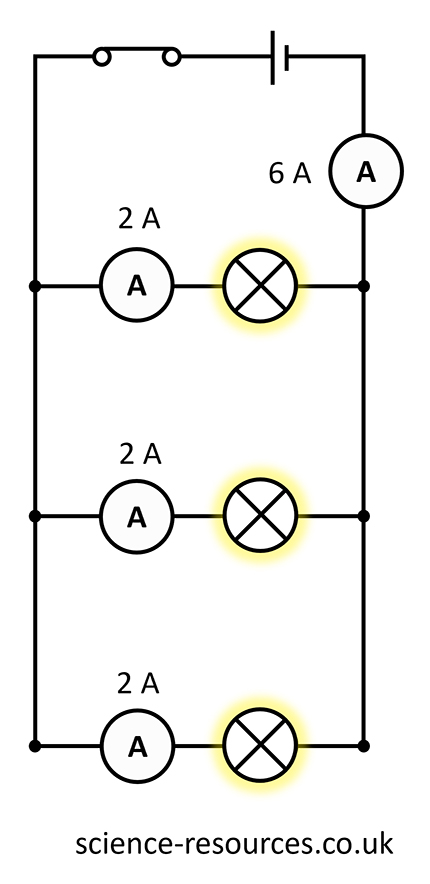
A parallel circuit has less resistance (R) when you add more components to it. This is different from a series circuit. Putting more components into the circuit in parallel makes more current go through the cell, not less.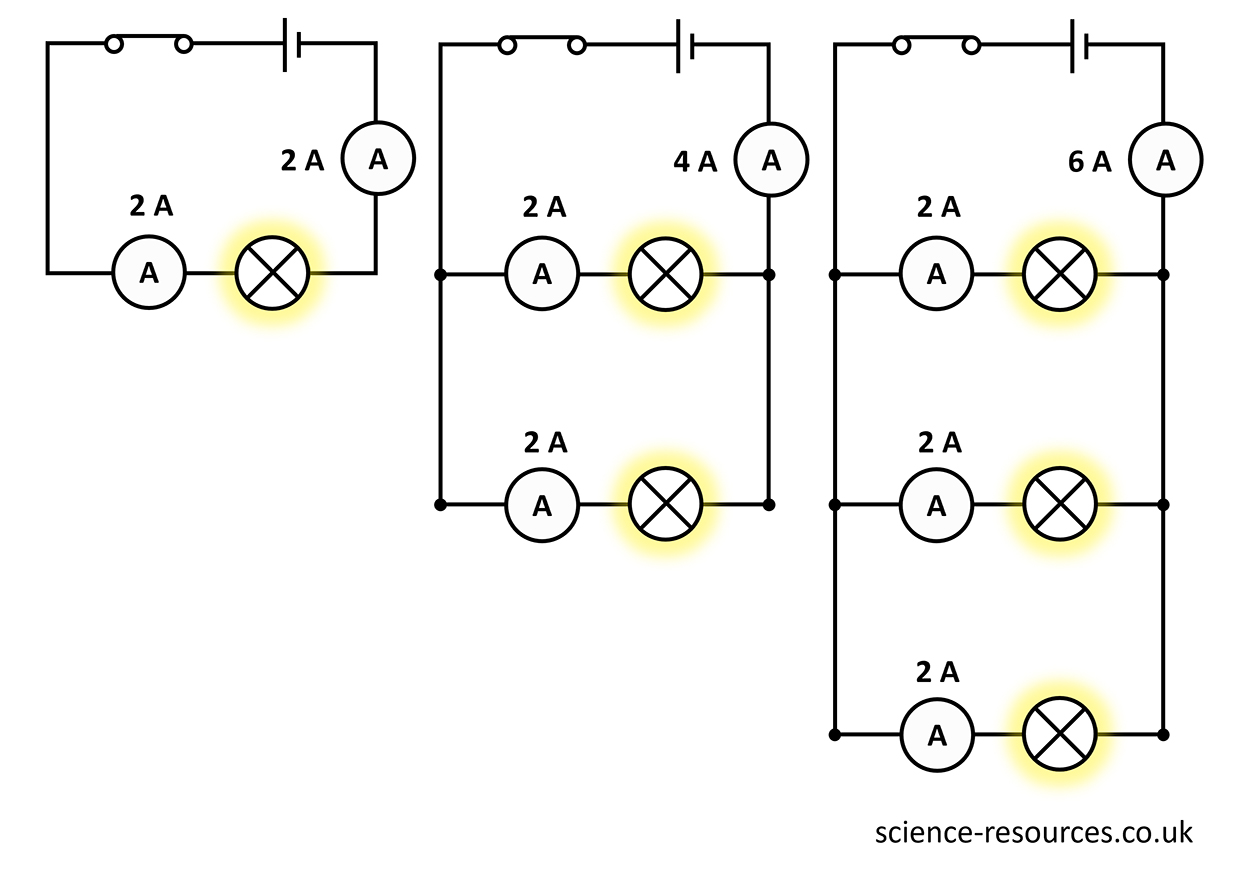
If the components in a parallel circuit have different resistances, each branch will have a different current. The more resistance the component has, the less current will go through it. The current is still split between the branches, and it still combines where the branches join.
In a parallel circuit, the potential difference across each circuit is the same as the potential difference across the cell or the battery. Therefore, if we add more lamps, the lamps all stay bright.
We use a voltmeter to measure the potential difference in a parallel circuit. Potential difference is measured in volts (V).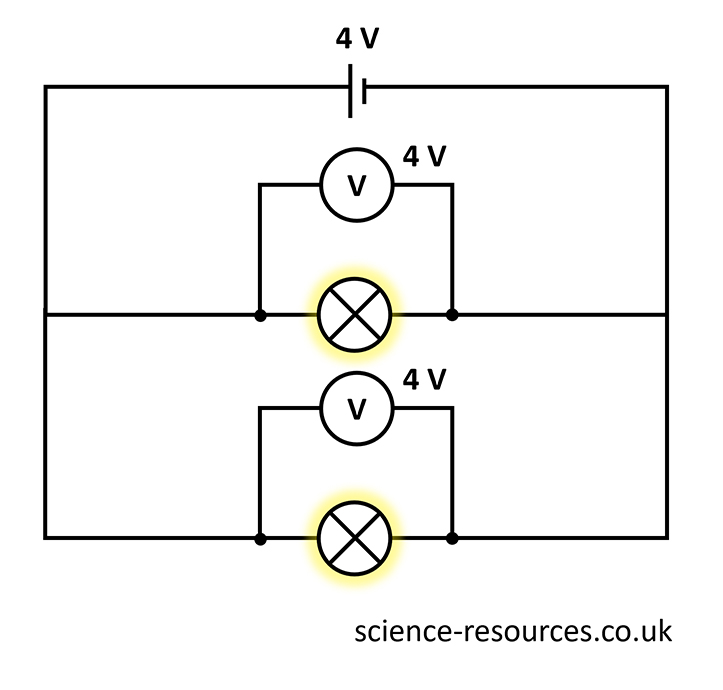
Summary: